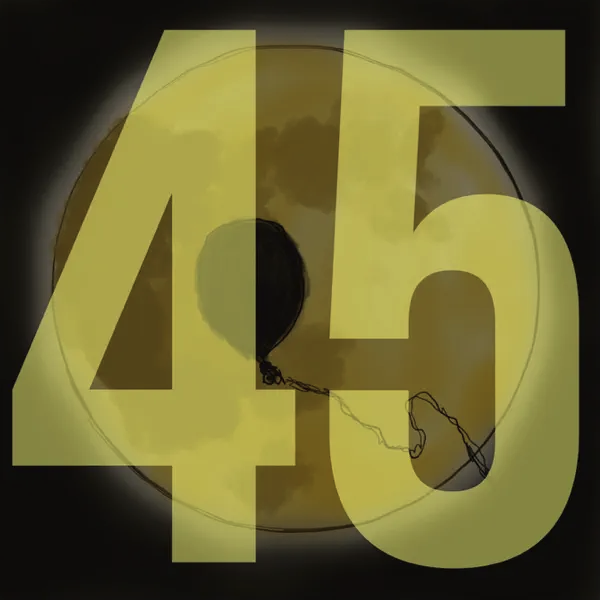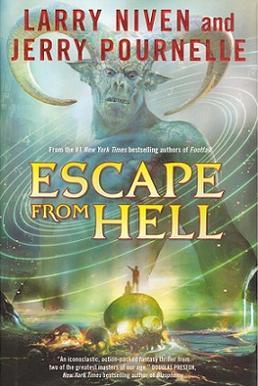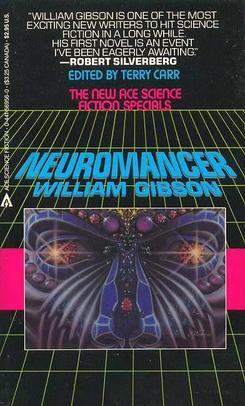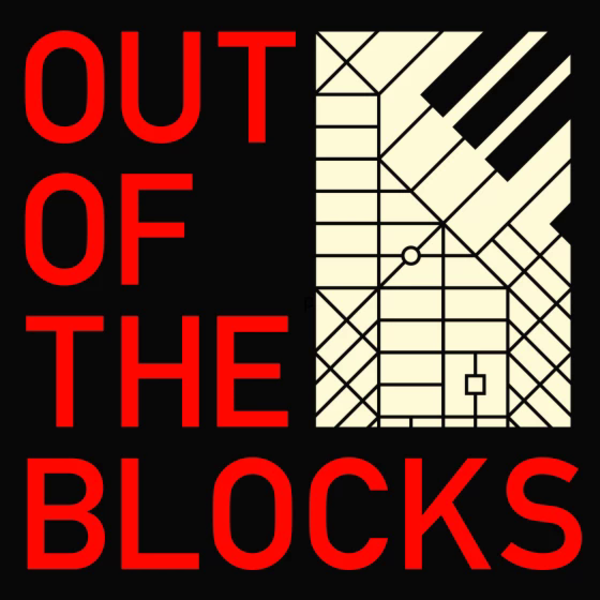S4.04 The Parasocial Book Club

All Your Days podcast about Utopia Revisited
One of the pleasures of being alive in the company of artists that you admire (and love) is that they make new art. Today, it’s a new album from Jim Infantino, a songwriter who’s been on with us before, all the way back in Season One, and it’s not only a new recording of songs, but it’s a big swing and dramatic departure. These are a few of my favorite things. And you, dear listener, are in for an electronic treat.

{ feuilleton } A journal by artist and designer John Coulthart.
Launched in February 2006 as a place to write about art, design, film, music and my work, I ended up writing a post almost every day for the next 10 years. New entries were less frequent after February 2016, and so too was the readership, thanks to social media. Between those two dates my writings were the subject of a feature in Eye magazine, while my post about designer Barney Bubbles (and all the interest it generated) led to my being mentioned in the New York Times.
The Art of Noises
The Art of Noises (Italian: L'arte dei Rumori) is a Futurist manifesto written by Luigi Russolo in a 1913 letter to friend and Futurist composer Francesco Balilla Pratella. In it, Russolo argues that the human ear has become accustomed to the speed, energy, and noise of the urban industrial soundscape; furthermore, this new sonic palette requires a new approach to musical instrumentation and composition. He proposes a number of conclusions about how electronics and other technology will allow futurist musicians to "substitute for the limited variety of timbres that the orchestra possesses today the infinite variety of timbres in noises, reproduced with appropriate mechanisms".

The Art of Noise
Art of Noise were formed after Gary Langan and JJ Jeczalik started to sample a drum riff that had been scrapped by the rock group Yes for band's album 90125 that was being produced by Trevor Horn. It was the very first time that an entire drum riff had been sampled on a Fairlight, C.M.I. sampler using the then new Page R sequencer, that allowed the programmer to sequence anything that had been sampled. At the same time Horn was setting up his to his new Zang Tuum Tumb label, co-founded by his wife Jill Sinclair, ex-NME journalist Paul Morley and with help from Langan.

Inferno
by Larry Niven and Jerry Pournelle
Inferno is based upon the hell described in Dante's Inferno. However, it adds a modern twist to the story. The story is told in the first person by Allen Carpenter (who spelled his name "Carpentier" on his novels), an agnostic science fiction writer who died in a failed attempt to entertain his fans at a science fiction convention party. He is only released, after many decades, from a Djinn-bottle in the Vestibule on the outer edge to Hell when he finally calls upon God for mercy. Upon release he is met by Benito, or Benny, a Virgil-like figure whose full identity is not immediately apparent. Benito offers to take him out of Hell by bringing him to the center.

Escape from Hell
by Larry Niven and Jerry Pournelle
Following events in the first novel, in which Carpenter learned that it is possible to leave Hell, Carpenter wants to help others in the way his benefactor helped him. Carpenter meets and travels through all the circles of the Hell described by Dante. He is accompanied in his travels by Sylvia Plath (whom he rescues from the Wood of the Suicides by burning her tree, causing her physical body to reform itself), attempting to understand the purpose of Hell and free many of the damned. Carpenter discovers that, apparently because he returned to Hell of his own free will to help others, he now possesses powers and abilities such as his mentor, Benito, also displayed.

Neuromancer
by William Gibson
Neuromancer is a 1984 science fiction novel by American-Canadian writer William Gibson. Considered one of the earliest and best-known works in the cyberpunk genre, it is the only novel to win the Nebula Award, the Philip K. Dick Award, and the Hugo Award. It was Gibson's debut novel and the beginning of the Sprawl trilogy. Set in the future, the novel follows Henry Case, a washed-up hacker hired for one last job, which brings him in contact with a powerful artificial intelligence.

The Difference Engine
by William Gibson and Bruce Sterling
The Difference Engine (1990) is an alternative history novel by William Gibson and Bruce Sterling. It is widely regarded as a book that helped establish the genre conventions of steampunk.
It posits a Victorian era Britain in which great technological and social change has occurred after entrepreneurial inventor Charles Babbage succeeded in his ambition to build a mechanical computer (actually his Analytical Engine rather than the difference engine).
The novel was nominated for the British Science Fiction Award in 1990, the Nebula Award for Best Novel in 1991, and both the John W. Campbell Memorial Award and the Prix Aurora Award in 1992.

The Flash
After helping Bruce Wayne and Diana Prince stop a robbery in Gotham City, Barry Allen revisits his childhood home and remembers his youth with his parents Nora and Henry, before Henry's wrongful imprisonment for Nora's murder.[a] Barry remembers on the day of his mother's death, his father went to the store for a chore, leaving his mother in the kitchen, resulting in her death. Overcome by emotions, Barry accidentally uses the Speed Force to travel back in time earlier in the day and informs Bruce about it. Despite Bruce's warnings of unintended consequences from time travelling, Barry goes back to the day of Nora's death and prevents his father from leaving the house. As Barry returns to the present, he is knocked out of the Speed Force by another speedster and ends up in an alternate 2013 where Nora is alive. In his home, he encounters his parents, then his past self, and realizes he arrived on the day he originally obtained his powers.

Teenage Mutant Ninja Turtles: Mutant Mayhem
Techno Cosmic Research Institute (TCRI) executive Cynthia Utrom sends a squadron to hunt down rogue scientist Baxter Stockman, who has created a mutagen to form his own mutant animal family, starting with a housefly. Stockman is interrupted by Utrom's strike force and killed in the resulting explosion, while the mutagen falls into the sewers of New York City.

American Born Chinese
American Born Chinese tells the story of teenager Jin Wang (played by Ben Wang), a son of Taiwanese immigrants, who for the most part is a typical high school kid. He collects manga, tries to join the soccer team, and is on a journey dealing with his own identity as he tries to figure out who he is. One day, Wei-Chen (Jimmy Liu), an exchange student, arrives at Jin's school. Unlike Jin, Wei-Chen didn't grow up in America, is loud and open by nature, and doesn't exhibit Jin's self-doubt and insecurities. At times, this causes Jin to feel embarrassed being associated with Wei-Chen.

Drive Your Plow Over the Bones of the Dead
Janina Duszejko is an ageing woman who lives in a rural Polish village, located near the Czech border in the Silesia region, in between Lewin and KÅ‚odzko. Janina spends most of her time studying astrology and translating the poetry of William Blake into Polish with her friend Dizzy. She had two dogs as pets but they both went missing. One day, her neighbour Big Foot, a frequent hunter, is found dead in his home by Janina's friend Oddball. From Janina and Oddball's inspection of the scene, it seems Big Foot choked on a bone while eating. Janina also finds a shocking photograph in Big Foot's house, the contents of which are revealed in the penultimate chapter. Janina disliked Big Foot because she disagrees with hunting animals. She begins to believe that animals could have killed Big Foot out of vengeance. She writes to the local police, who ignore her theory. The police commandant–called the Commandant by Janina–is also a hunter and is later found dead beside his car by Dizzy. The Commandant's death emboldens Janina's beliefs, but her friends Dizzy and Oddball are sceptical of her. Janina is questioned by police as a witness to the crime scene. One officer accuses Janina of seemingly valuing the life of animals more than that of humans. Janina tells them that she values both equally.

Metamagical Themas
by Douglas Hofstadter
Major themes include: self-reference in memes, language, art and logic; discussions of philosophical issues important in cognitive science/AI; analogies and what makes something similar to something else (specifically what makes, for example, an uppercase letter 'A' recognizable as such); and lengthy discussions of the work of Robert Axelrod on the prisoner's dilemma, as well as the idea of superrationality.

Piranesi
by Susanna Clarke
Piranesi’s house is no ordinary building: its rooms are infinite, its corridors endless, its walls are lined with thousands upon thousands of statues, each one different from all the others. Within the labyrinth of halls an ocean is imprisoned; waves thunder up staircases, rooms are flooded in an instant. But Piranesi is not afraid; he understands the tides as he understands the pattern of the labyrinth itself. He lives to explore the house.

Giovanni Battista Piranesi
It is important to look at his contribution as an archaeologist, which was acknowledged at the time as he had been elected to the Society of Antiquaries of London. His influence of technical drawings in antiquarian publications is often overshadowed. He left explanatory notes in the lower margin about the structure and ornament. Most ancient monuments in Rome were abandoned in fields and gardens. Piranesi tried to preserve them with his engravings. To do this, Piranesi pushed himself to achieve realism in his work. A third of the monuments in Piranesi's engravings have disappeared, and the stucco and surfacings were often stolen, or restored and modified clumsily. Piranesi's precise observational skills allow people to experience the atmosphere in Rome in the eighteenth century. Piranesi may have recognised his role of disseminating remarkable information through meaningful images. He became the Director of the Portici Museum in 1751.

The Magician’s Nephew
by C. S. Lewis
The Magician's Nephew is a portal fantasy children's novel by C. S. Lewis, published in 1955 by The Bodley Head. It is the sixth published of seven novels in The Chronicles of Narnia (1950–1956). In recent editions, which sequence the books according to Narnia history, it is volume one of the series. Like the others, it was illustrated by Pauline Baynes whose work has been retained in many later editions. The Bodley Head was a new publisher for The Chronicles, a change from Geoffrey Bles who had published the previous five novels.

Empress
by Greg Olear
In 2016, construction workers in Istanbul made a remarkable discovery. Sealed in a lead pot twelve feet underground was a lost manuscript by the Byzantine princess and historian Anna Komnene—an intimate account of the royals who held sway in Constantinople in the High Middle Ages. This is the first English translation of the Anekdota, or Secret History, of Anna Komnene (1083-1153). Not since the Dead Sea Scrolls were unearthed at Quran has an archeological find threatened to upend everything we know about a heretofore-fuzzy historical period.

How to Live
by Derek Sivers
Many books believe they know how you should live. But each book disagrees with the next. In “How to Live”, each chapter believes it knows how you should live. And each chapter disagrees with the next.
One chapter makes a compelling argument for why you should be completely independent, keeping all options open. The next chapter argues why you should commit to one career, one place, and one person.

Daily Afflictions
by Andrew Boyd
A dark, twisted, existential manifesto posing as a book of daily inspiration.
Revolutionizing the best-selling genre, this thinking man's parody hijacks the format of daily affirmations but offers a different message: only in paradox, truth; only in darkness, light; only in affliction, affirmation. These "daily afflictions" offer readers inspiration, practical advice, and food for thought, as they navigate the jungle of existential terror that begins anew each day. We follow the fictional Brother Void on a spiritual journey, both profound and hilarious, into self, family, love, career, death―and, ultimately, Enlightenment. We learn to "listen to our inner critic," appreciate "the nurturing power of dysfunctional families," "love the wrong person," "succeed at failure," "embrace our inner corpse," and, finally, withstand the "agony of being connected to everything in the Universe." Part spiritual autobiography, part ironic meditation, this tragicomic guide to life's sublime predicaments will elevate and educate the spirit. The truth will set you free, Brother Void reminds us, but first it will hurt like hell.

Blinkist
Perfect for curious people who love to learn,busy people who don’t have time to read,
and even people who aren’t into reading

Let The World Forget Us by Ben Burns
Jim Infantino wrote and performed on one track, and one track features Derek Sivers. An electronic album by our guest.
Out of The Blocks podcast
Out of the Blocks is an immersive listening experience built from a mosaic of voices and soundscapes on the streets of Baltimore. A custom-tailored score embroiders this tapestry of stories hidden in plain sight.






